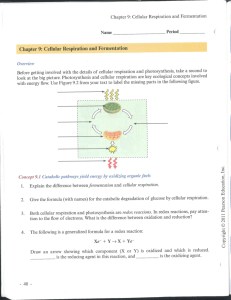

Write a scientific summary describing changes in the rock pocket mouse populations at Location B. Why didn’t this phenotype become more common in the population? 3. Explain the presence of dark-colored mice at Location A. Remember that “success” is defined by an organism’s ability to survive and produce offspring. Explain why a pocket mouse’s color influences its overall success. Cut and paste your graph into your lab notebook when it is completed.Īnalysis Questions: 1. You may record all of your data for each time period (A and B) on one bar graph or split A and B and make two graphs. Be sure to provide appropriate titles and labels for the x- and y-axes. Use colored pencils to prepare a bar graph based on the data that shows the distribution of the mice at locations A and B through time. Number of mice with light fur Number of mice with dark fur Number of mice with light fur Number of mice with dark furĨ. Once you are satisfied you are correct, copy the data table below and fill it out using the counts you recorded in your note book. Change the order you put the illustrations in if necessary. Using what you learned by watching the film, check the order in which you arranged the illustrations. Why are some mice light and some mice dark? Does fur color provide any selective advantage or disadvantage? What role does the pocket mouse play in the desert food web? What can explain the differences among the illustrationsħ.

Answer the following questions as you review your notes: As you review, look for an explanation for the differences among the illustrations that will help you to confirm that the order in which you arranged the illustrations is correct. Review your notes on The Making of the Fittest: Natural Selection and Adaptation. When all four illustration pages are placed in order, this one is: 1st (oldest) 2nd 3rd 4th (most recent) (Circle the appropriate number)Ħ. When all four illustration pages are placed in order, this one is: 1st (oldest) Location B: number of mice with light fur _ Location A: number of mice with light fur _ The Making of the Fittest: Natural Selection and Adaptation (2-4 sentences)Ĭolor variation over time in rock pocket mouse populations: Student handout Explain, in your notebook, how you decided which illustration represents the most recent pocket mouse population and why you positioned the others in the sequence as you did. You should have 2 lists with four illustrations each (Location A and Location B). Indicate your order in your lab notebook. List the illustrations in what you think is the correct order from oldest to most recent. Record your counts in your lab notebook using the example below: Location A (picture#): number of mice with light fur _ number of mice with dark fur _ Location B (picture#): number of mice with light fur _ number of mice with dark fur _ 4. Using the pictures on the following pages, count the number of light and dark mice present at each location at each moment in time. d) Why are “mutations random but natural selection is not”? 3. c) Is the following statement true or false? “The appearance of dark-colored volcanic rock caused the mutation for black fur to appear in the rock pocket mouse population.” Justify your answer. Answer the following pre-lab questions: a) What is a mutation? b) Is the following statement true or false? “The same mutation could be advantageous in some environments but a disadvantage in others.” Justify your answer. Watch the video titled “Natural Selection and Adaptation” that is on the class website. NOTE: The images are numbered but are out of order. Each illustration shows the color variation at two different locations, A and B, at a particular moment in time over a period of several hundred years. The illustrations on the lab tables represent snapshots of pocket mouse populations. Here and there, however, separated by several kilometers of light-colored substrate, are patches of dark volcanic rocks that formed from cooling lava flows. Most of the landscape consists of light-colored sand and rock. Similarly, there are two major colors of substrate, or surface materials, that make up the desert floor. There are two common varieties-a light-colored variety and a dark-colored variety. What’s so special about these little mice? Populations of rock pocket mice are found all over the Sonoran Desert in the southwestern United States. Their impact on science, however, has been enormous. A typical pocket mouse is just about 170 millimeters long from nose to rump, shorter than an average pencil. The Making of the Fittest: Natural Selection and Adaptation Color variation over time in rock pocket mouse populations Introduction: The tiny rock pocket mouse weighs just 15 grams, about as much as a handful of paperclips.


 0 kommentar(er)
0 kommentar(er)
